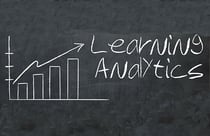 One of the reasons learning analytics is so popular, is because it has the ability to shape and predict the future, making it an essential part of improving institutional decisions and outcomes. The corporate sector already utilizes analytics to support decision making about customers, but for the higher education sector, the use of learning analytics is fairly new.
One of the reasons learning analytics is so popular, is because it has the ability to shape and predict the future, making it an essential part of improving institutional decisions and outcomes. The corporate sector already utilizes analytics to support decision making about customers, but for the higher education sector, the use of learning analytics is fairly new.
1. Academic Analytics
Academic Analytics provide higher education institutions with the data needed to make better financial and operational decisions. Academic analytics brings together large data sets with statistical techniques and predictive modelling to improve decision making.
2. Learning Analytics
Learning analytics involves data about learners, pulled from LMS reporting and analytics solutions. The purpose of learning analytics is to find weaknesses in teaching and training, and support the achievement of specific learning goals. This involves pulling data on student activities and interactions in their online learning activities, and analyzing it deeply to create better learner profiles.
3. Predictive Analytics
Predictive analytics takes academic and learner analytics a step further, by using past events to predict the future - more specifically, pinpointing trends in the forecast, which will make academic, operational, and financial planning much easier. There are a set of LMS reporting and analytics technologies that reveal patterns and relationships in large amounts of data. These patterns and relationships can then be used to predict future behaviours and events.
4. Data Mining
Data mining is the discovery of knowledge through data, and involves pulling interesting and useful patterns of knowledge from large amounts of data. Data mining allows you to better sift through your data to pick out what is relevant, and then make better use of the data to make quicker predictions of likely future outcomes. A prominent higher education institute who use data mining is Harvard University.
5. Big Data
Big data is refined information that is created when learners engage in learning activities either through a learning management system, or through in-class learning technologies. Big data leads can be used to better determine root causes of failures and successes, and thus allows better decision making, and more strategic business moves.
Looking for more information on higher education and online learning? Watch out recorded webinar, Top 7 Must Have LMS Features in Higher Education.





